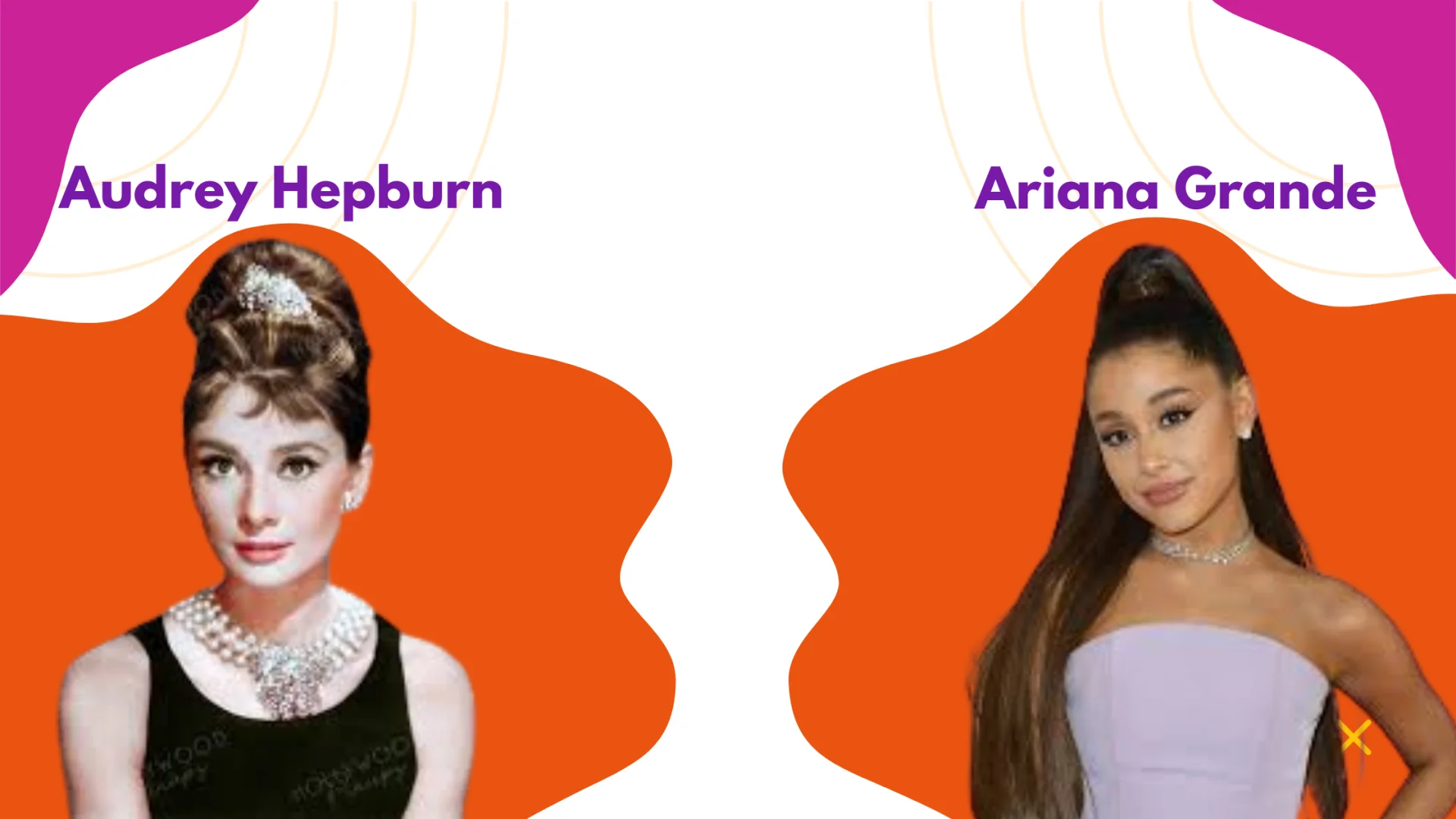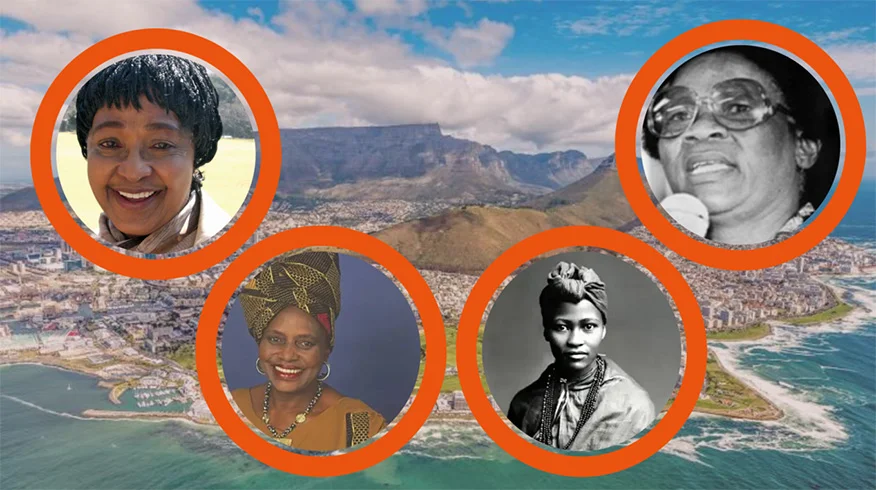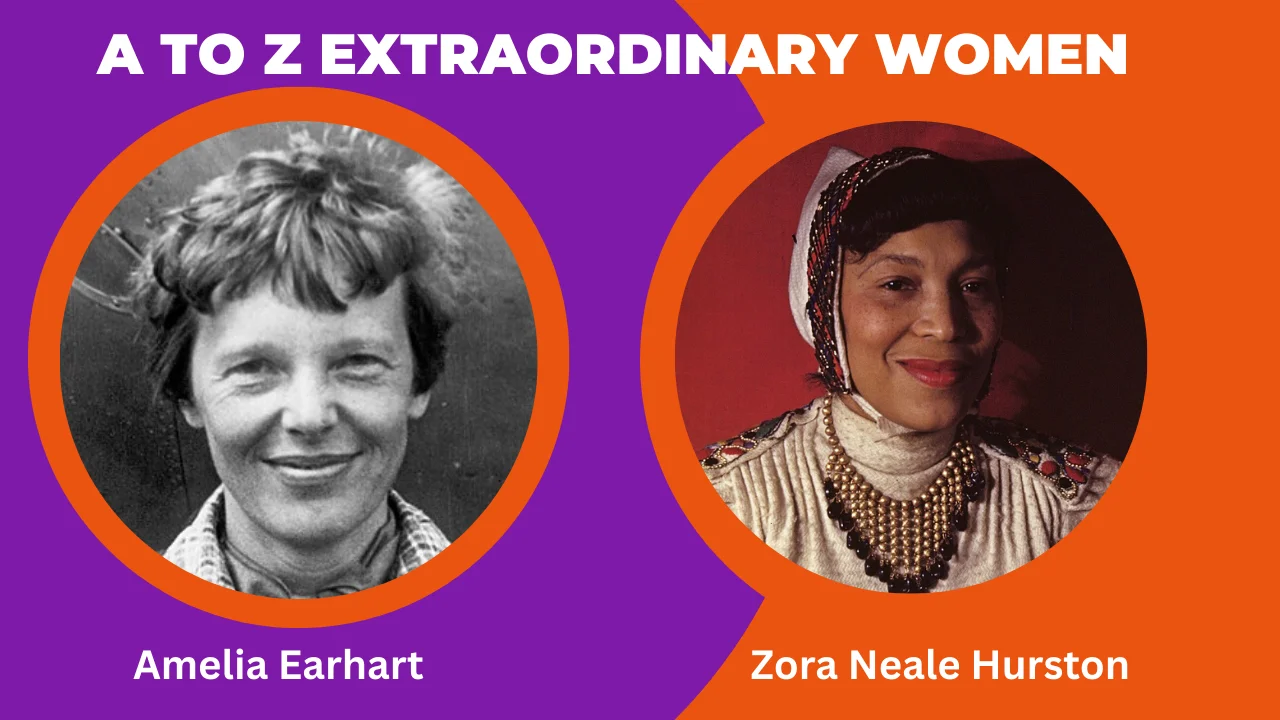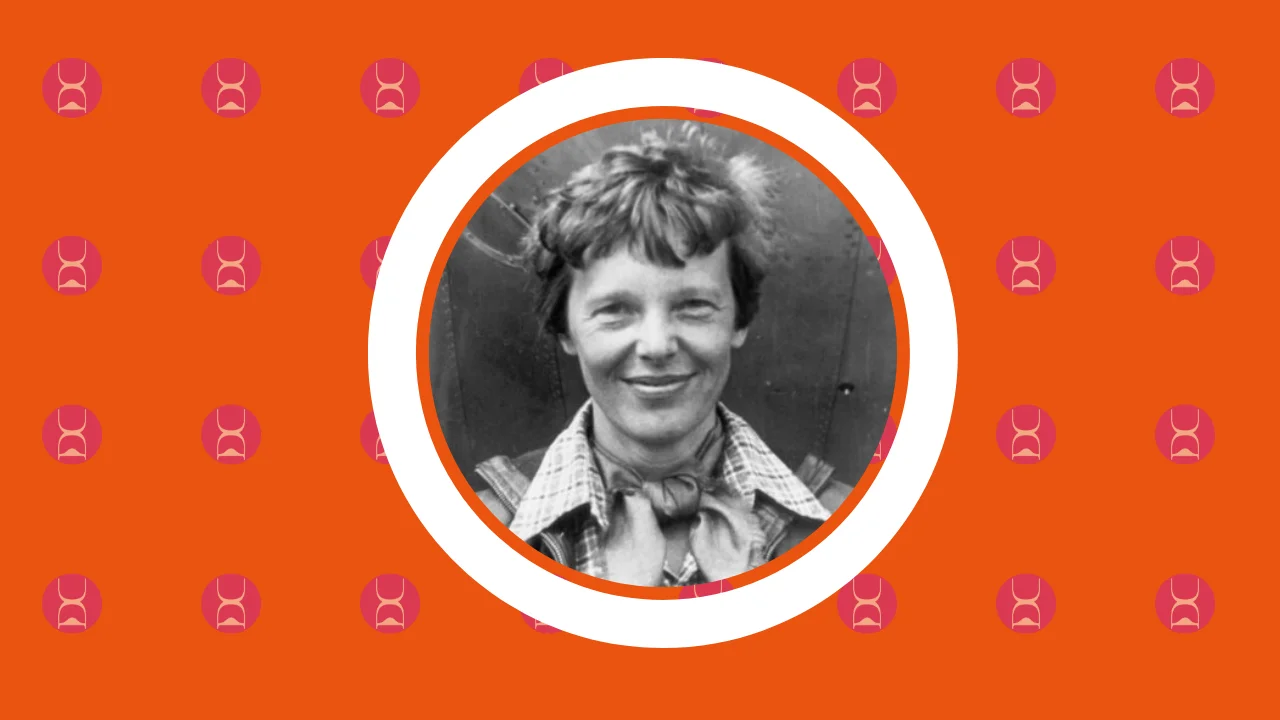Blind, Deaf, Unstoppable: The Helen Keller Story
12 Mar 2025
Featured

Being blind and deaf is enough reason for someone to give up on chasing their goals and dreams. But this was a different case for Helen Keller, who got blind and deaf after an illness when she was only 19 months into her life.
Helen Keller was an American author, activist and lecturer. As an author, Keller wrote and published more than 10 books and several articles. She was also passionate about activism.
Keller was born on June 27, 1880 in Tuscumbia, Alabama, to parents Arthur Henley Keller and Catherine Everett (Adams) Keller.
[embed]https://youtu.be/Oyw6JYSA3v0[/embed]
Keller’s story is an inspiring one. Amid her circumstances, she did not allow her condition to stop her from pursuing her dreams and goals. Keller attained numerous feats in her lifetime. And this still keeps her relevant to this modern day.
“The best and most beautiful things in the world cannot be seen or even touched - Helen Keller “
Lesson 1 - Nothing is impossible: Helen Keller’s story perfectly describes the phrase - nothing is impossible. She was able to prove that nothing is indeed impossible. Despite being blind and deaf, Keller created so much impact during her lifetime. She also achieved everything she wanted to in life.
“We can do anything we want if we stick to it long enough” – Helen Keller.
Growing up as an infant in Ivy Green, at 19 months, Keller contracted an illness that took away her sight and her ability to hear. Back then, the doctors described the illness as an acute congestion of the stomach and the brain.
"Helen did not merely overcome her dual disabilities of blindness and deafness; rather, she overcame the potential double burden of these disabilities often imposed by society.” - Kim Nielsen.
In Keller’s case, the contemporary doctors believe it might have been meningitis caused by the bacterium Neisseria meningitidis (meningococcus) or possibly Haemophilus influenzae/.
With the development of her new condition, Keller tried to communicate somewhat with Martha Washington, the daughter of their family cook. Martha was the only person who understood Keller’s sign then.
By age 7, Keller had more than 60 home signs to communicate with her family and could distinguish people by the vibration of their footsteps.
In 1886, Keller’s mother got inspired by an account in Charles Dickens’s American Notes of the successful education of Laura Bridgman, a deaf and blind woman, who urged Keller and her father to consult physician J. Julian Chisolm (An eye, ear, nose and throat specialist) in Baltimore for advice.
After the visit, Chisholm had to refer them to Alexander Graham Bell, who worked with deaf children then. Bell advised Keller’s parents to contact the Perkins Institute for the Blind. This was the school where Bridgman studied.
After contacting the school, the school’s director sent Anne Sullivan, a 20-year-old alumna from the school who was visually impaired, to become Keller’s Instructor. This was the beginning of a nearly 50-year-long relationship between them.

source:wikipedia[/caption]
Sullivan taught Keller how to communicate by spelling words into her hands. Although, at first, Keller struggled a bit with the lessons, especially with comprehending every object had a word identifying it. But after a while, she successfully picked up the lessons from Sullivan.
Keller demanded that Sullivan sign the names of all the other familiar objects in her world.
"We are not seeking a path to a perfect form of being in which life is lived without difficulty, but rather, we are seeking a pathway to a life that endures.” - Kim Nielsen.
Keller started her formal education in May 1888 at the Perkins Institute for the Blind. In 1893, She and Sullivan attended William Wade House and Finishing School. Keller and Sullivan later moved to New York to attend the Wright-Humason School for the Deaf, where they learnt from Sarah Fuller at the Horace Mann School.
After the duo returned to Massachusetts, Keller entered The Cambridge School for Young Ladies before gaining admission in 1900 to Radcliffe College of Harvard University, where she lived in Briggs Hall, South House.
Back then, her admirer, Mark Twain, introduced her to Standard Oil magnate Henry Huttleston Rogers and his wife, Abbie. The couple paid for Keller’s education. In 1904, Keller graduated as a member of Phi Beta Kappa from Radcliffe and became the first deafblind person to earn a Bachelor of Arts degree.
In addition to her formal education, she learnt how to communicate and speak to others through determination. She also spent most of her time giving lectures and speeches on aspects of her life. Keller learnt how to hear people's speech using the Tadoma method, which means using her fingers to feel the lips and throat of the speaker. She became proficient at using braille and using fingerspelling to communicate. As part of her contribution to the welfare of those with disabilities, Keller also worked towards making Braille and signs more accessible.
Keller was a world-famous speaker and author. She was an advocate for people living with disabilities amid numerous other causes. During her lifetime, Keller traveled to 25 countries, giving motivational speeches about deaf people’s conditions. She also testified before Congress, strongly advocating to improve the welfare of blind people.
In 1925, she founded the Helen Keller Organization with George A. Kessler. The organization was devoted to research in vision, health and nutrition.
In 1925 also, Keller famously lobbied for the rights of the blind and deaf at the League of Nations in Geneva.
Keller also helped to found the American Civil Liberties Union (ACLU) in 1920. Keller met every US President, including - Grover Cleveland - Lyndon B. Johnson. She was also friends with public figures such as Alexander Graham Bell, Charlie Chaplin and Mark Twain.
She became a member of the Socialist Party in 1909, where she actively campaigned and wrote in support of the working class from 1909 to 1921. Most of her speeches and writings were about women’s right to vote and the effects of war. She supported causes that opposed military intervention.
Lesson 2: Go after your dreams: Being blind and deaf from the infant stage was a challenging experience for young Keller while growing up. There were times she got frustrated by her condition. But one unique thing about Keller is that she was determined to pursue her dreams regardless and she made numerous impacts on many lives.
“Life is either a daring adventure or nothing. Security is mostly a superstition. It does not exist in nature. Avoiding danger is no safer in the long run than outright exposure.” – Helen Keller.
Keller got involved with resolving numerous social and political issues, including women's suffrage, pacifism, birth control and socialism.One unique thing about Keller’s activism is that it was never spasmodic. Keller specifically chooses causes that resonate with her.
This demonstrates how thoughtful and principled Keller was. She was never found supporting random causes. Another unique trait about Keller was that she was never afraid to speak up against injustice and she did this while touring around the world.

source:wikipedia[/caption]
Lesson 3 - Focus on the Positive: Keller did not for one day allow her condition to define her purpose in life. She didn't focus on the limitations that being blind and deaf could cause her. Instead, Keller channeled her energy into focusing on the positive and brighter side. She spent most of her time looking for ways to contribute positively to society.
“Although the world is full of suffering, it is also full of overcoming it.” – Helen Keller.
Before Keller died, she wrote a total of 12 published books and several articles, and these books include the following;
● The Frost King (1891)
● The Story of My Life (1903)
● Optimism: an essay (1903) by T. Y. Crowell and company
● My Key of Life: Optimism (1904), Isbister
● The World I Live In (1908)
● The miracle of life (1909) Hodder and Stoughton
● The song of the stone wall (1910) The Century co.
● Out of the Dark, a series of essays on socialism (1913)
● Uncle Sam Is Calling (set to music by Pauline B. Story) (1917)[62]
● My Religion (1927; also called Light in My Darkness)
● Midstream: my later life (1929) Doubleday, Doran & Company
● We bereaved.(1929) L. Fulenwider, Inc
● Peace at eventide (1932) Methuen & co. ltd
● Helen Keller in Scotland: a personal record written by herself (1933) Methuen, 212pp
● Helen Keller's journal (1938) M. Joseph, 296pp
● Let us Have Faith (1940), Doubleday, & Doran & co., inc.
● Teacher: Anne Sullivan Macy: a tribute by the foster child of her mind. (1955), Doubleday (publisher)
● The Open Door (1957), Doubleday, 140pp
● The Faith of Helen Keller (1967)
Helen Keller: her socialist years, writings and speeches (1967)
Helen Keller was never married and had no child/children. She spent the later years of her life raising funds for the American Foundation for the Blind. Before she died, she had a series of strokes in 1961.
She died in her sleep on June 1, 1968, at her home, Arcan Ridge, located in Easton, Connecticut, at the age of 87. Keller’s body was cremated in Bridgeport, Connecticut, and her ashes were buried at the Washington National Cathedral next to her constant companions, Anne Sullivan and Polly Thomson.
Before her death, Keller was awarded the Presidential Medal of Freedom by President Lyndon B. Johnson on September 14, 1964. She was elected to the National Women's Hall of Fame at the New York World's Fair in 1965.
Helen Keller never allowed her disabilities to become a barrier for her. She used her platform to advocate for people with disabilities, women's suffrage, and pacifism. This demonstrates how clean and accommodating her heart is.
Lesson 4 - Hope and confidence: Keller also teaches us to be hopeful and confident in ourselves and our abilities. She was optimistic that she would go far in life, even with her conditions. With this hope and confidence, she achieved a lot during her lifetime.
In 1999, Keller was named one of Time magazine's 100 Most Important People of the 20th Century. The Helen Keller Hospital in Sheffield, Alabama, is dedicated to her. Helen Keller was inducted into the National Women's Hall of Fame in 1973.

Source: wikipedia[/caption]
References
Tags
Women
Author
Activist
Latest Posts
Tags
- Women27
- Scientist9
- Author6
- Inventor3
- Nobel3
- Singer3
- Actor2
- Activist2
- Physicist2




